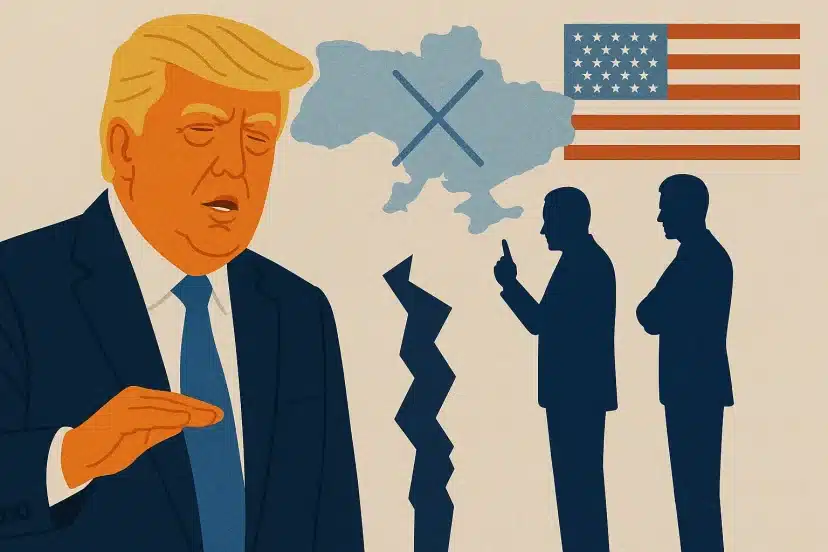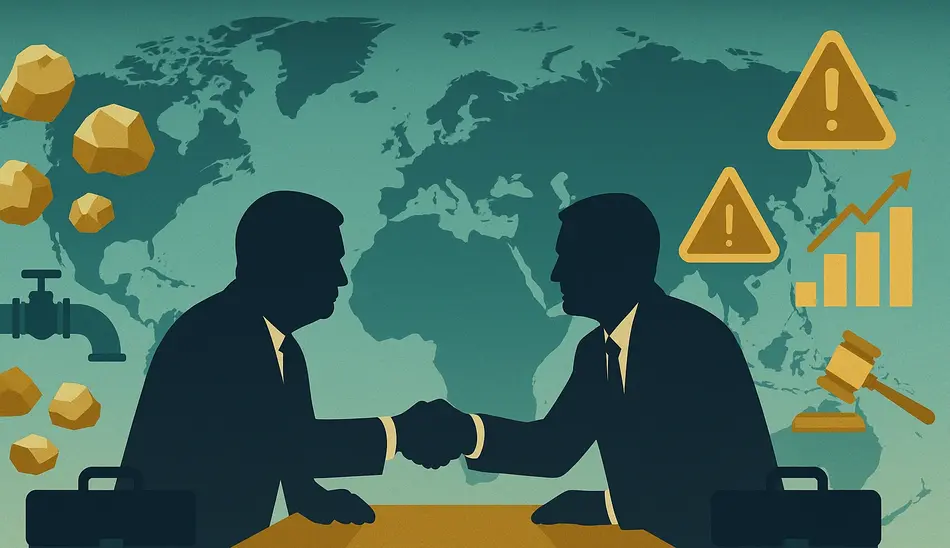Putin Trump Meeting lasted more than three hours behind closed doors before Russian President Vladimir Putin and former U.S. President Donald Trump emerged for a brief press conference, leaving more questions than answers.
While the public statements were short, the details trickling out hint at a complex mix of business proposals, geopolitical bargaining, and speculation around rare-earth mineral access in Ukraine. Analysts suggest that the Putin Trump Meeting could reshape both economic ties and geopolitical strategies, depending on what was agreed upon behind closed doors.
Table of Contents
Putin Trump Meeting With Economic Undertones
Although billed as a diplomatic engagement, the presence of U.S. Commerce Secretary and Treasury Secretary underscored the economic weight of the discussions. On the Russian side, several business leaders attended — a sign that Moscow was positioning the meeting as an opportunity to pitch commercial partnerships.
During his remarks, President Putin went beyond standard diplomacy, openly making a business case to Trump. He pointed to cooperation in space exploration, high-tech industries, and bilateral trade opportunities. Putin also referenced China’s role in purchasing advanced AI chips from the United States, suggesting Russia could be a similar customer if restrictions were eased.
Hire Strategically in a Shifting Geopolitical Climate
Post your job on WhatJobs and secure the talent you need—no matter how global politics and resource markets evolve.
Post a Job Now →Putin’s Bold Economic Claim
At one point, Putin asserted that Russia’s economy was “growing at 20%” — a statement met with a smirk from Trump. Economic analysts were quick to dismiss the figure as unrealistic, noting that Russia has faced sustained Western sanctions and resource-based constraints since its invasion of Ukraine.
The claim, however, was less about accuracy and more about signaling strength. By projecting rapid growth, Putin appeared to be marketing Russia as a viable business partner at a time when Western investors remain cautious.
Rare-Earth Minerals: The Silent Agenda
Perhaps the most sensitive element discussed behind closed doors was the question of rare-earth minerals. According to reports, talks touched on potential arrangements involving Ukrainian land currently under dispute. Rare-earth elements, crucial for advanced manufacturing and clean energy technologies, are concentrated in parts of Ukraine contested by Russian forces.
The idea floated — though far from concrete — involved a potential land swap or shared development agreement granting U.S. and Russian companies access to rare-earth mining projects. One scenario mentioned was a 50-50 joint venture for future extraction rights, should Ukraine agree.
For now, such speculation remains politically explosive. As one analyst noted:
“Why would Ukraine give up its most valuable land — rich in critical minerals — after fighting so hard to defend it? It makes no strategic sense.”
Trump’s Bottom Line: “We’re Not Quite There Yet”
In his closing comments, Trump acknowledged progress but stressed that agreements were still distant. “We’re not quite there yet,” he said, suggesting that while dialogue had advanced, any tangible outcome would require significant further negotiation.
Observers say this phrase captures the broader reality: despite the optics of engagement, deep divides remain over sanctions, Ukraine’s sovereignty, and whether U.S. businesses should risk aligning with Moscow.

Why This Meeting Matters
The Putin–Trump engagement comes at a delicate geopolitical moment With U.S. – China tensions escalating over trade and technology, Russia sees an opening to position itself as an alternative partner. Yet, Washington remains wary of giving Moscow economic lifelines while the war in Ukraine persists.
The stakes go beyond politics: access to rare-earth minerals is a critical global issue. Whoever controls Ukraine’s mineral reserves will hold leverage over industries from EV batteries to semiconductors.
For now, both sides are talking, but concrete deals appear far off.
FAQs on the Putin–Trump Meeting
Q1: What industries were discussed as possible areas of cooperation?
Putin highlighted space exploration, high-tech development, and trade in AI chips as potential areas of U.S.–Russia cooperation.
Q2: Was there any agreement on rare-earth minerals in Ukraine?
No. While rare-earth resources were mentioned, any talk of land swaps or joint ventures remains speculative and politically controversial.
Q3: Did Trump and Putin sign any deals?
No deals were announced. Trump said, “We’re not quite there yet,” signaling that discussions are still preliminary.
Q4: Why is this meeting significant?
It highlights Russia’s attempt to break out of isolation by pitching itself as a business partner. But with the war in Ukraine ongoing, U.S. policymakers remain cautious about deepening ties.
Bottom Line: The Putin–Trump meeting was less about diplomacy and more about business. While rare-earth minerals and high-tech cooperation dominated speculation, concrete agreements remain elusive.




